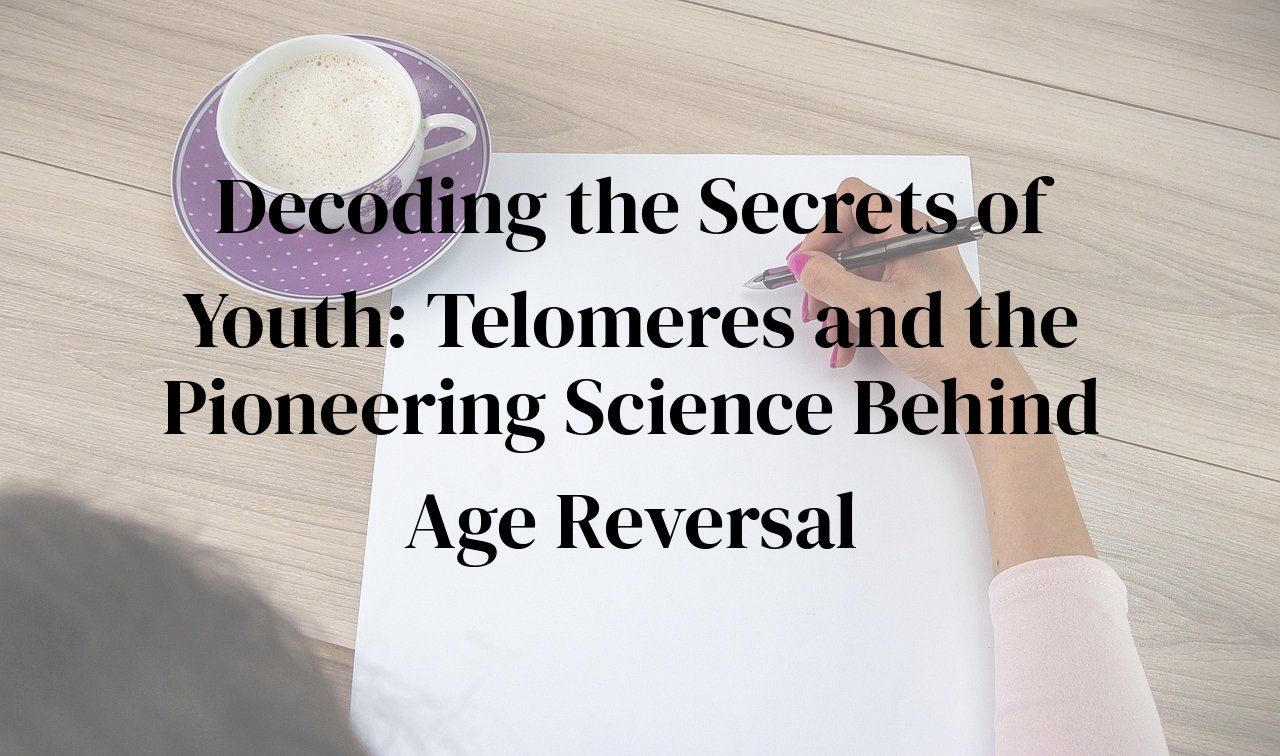
In the ever-evolving journey to understand human longevity, science peeks into the cellular mechanics that dictate our aging process. This post delves into the captivating world of telomeres, the microscopic guardians of our chromosomes, and the recent scientific conversations surrounding their role in the pursuit of agelessness. Readers will embark on a quest to uncover not only what telomeres are but also how they influence our body’s natural aging clock and the innovative methods being explored to harness their potential for promoting long-term health and vitality.
For anyone intrigued by the intersection of genetics and wellness, this article promises valuable insights — exploring how the science of telomeres may contribute to breakthroughs in maintaining a youthful vigor and the tangible benefits this knowledge could yield. Prepare to enlighten yourself with a spectrum of scientific revelations and practical approaches that might just nudge us closer to the fabled fountain of youth.
Table of Contents
Telomeres 101: Understanding Our Cellular Timekeepers
Imagine the surprise and sheer wonder I felt when I first learned about the hidden guardians of our chromosome’s integrity – the telomeres. These remarkable structures, situated at the very end of our chromosomes, have captivated me since my foray into the science of aging. To understand them is to unwrap the intricate biological intricacies that drive our cellular aging process.
Envision your shoelaces, and at their tips are small, protective caps ensuring they don’t fray – that’s akin to what telomeres do at a cellular level. These nucleotide sequences are repeating strings of DNA – rich in guanine – that shield our genetic material during cell division. I couldn’t help but see them as life’s own poetic scribes, scribbling the passage of time within our cells.
Each cell division sees telomeres slightly shorten, a biological hourglass tirelessly counting down. However, an enzyme named telomerase can add back these sequences, though its activity varies among people and even different cell types. This balance, or lack thereof, has been a personal quest of mine and many researchers to understand, as it hints at the tantalizing prospect of potentially slowing, halting, or even reversing cellular aging.
Through my readings and interactions with pioneering scientists, I’ve learned how telomere length is a dance of many factors – genetics, lifestyle, stress, and environmental influences all sway in this grand ballet of life. Their length is not just a marker of age; for me, they symbolize the mosaic of life experiences and the physical embodiment of time itself.
As a devoted health advocate, I interpret the science of telomeres like a treasure map to a fabled fountain of youth, a way to possibly extend healthspan, if not lifespan. The implications of such knowledge – to live not just longer, but stronger – fuel my enthusiasm to delve into the realm of telomere biology and share its transformative potential. It’s a journey that begins with these microscopic timekeepers, inviting us all to reimagine the boundaries of human health and longevity.
The Ageless Enigma: How Telomere Length Influences Longevity
When venturing into the labyrinth of the human genome, we find telomeres, the protective caps at the ends of our chromosomes, safeguarding our genetic data. These caps, akin to the plastic tips on shoelaces, prevent the dramatic fraying of our genetic threads. I’ve always been fascinated by the fact that as we age, these telomeres shorten, a phenomenon intrinsically tied to our life’s tapestry. Delving into the science of the minuscule yet mighty telomere has uncovered profound insights into longevity’s puzzle, evoking both awe and an unyielding curiosity within me.
Through countless hours spent sieving through pioneering research and engaging with leading experts, I’ve embraced the complexity of telomere biology. Evidence suggests that shorter telomeres are associated with an increased risk of age-related diseases, sending ripples of alarm through our holistic wellbeing. This is not a mere correlation; extensive studies illustrate that telomere attrition contributes to the cellular senescence and deterioration that manifest as the all-too-familiar signs of ageing. It’s a mesmerizing dance between genetics and time, and I’ve been relentlessly deciphering its rhythm.
Yet, the plot thickens as we consider lifestyle factors that can impact telomere length. My own journey of integrating stress reduction, a nourishing diet rich in antioxidants, and consistent physical activity stems from the desire to fortify these genetic guardians. I remember savoring the overflowing bowl of mixed berries, the vibrant food believed to fortify telomeric strength, contemplating the fusion of nature’s bounty with our cellular fortitude.
Scientists unravel the intricate web connecting telomere integrity to our molecular longevity. Telomerase, the enzyme that adds DNA sequence repeats to compensate for telomere shortening, emerges as a beacon of youthful resilience. Groundbreaking therapies aimed at activating telomerase have spurred both excitement and ethical debate, challenging our grasp of medicine’s moral boundaries. It’s a bold new frontier in the quest to preserve life’s ephemeral bloom.
Reflecting on the potential of this research sweeps me into a profound sense of responsibility. If the threads of telomere science continue to weave promising narratives, its integration into public health could reshape our collective destinies. The possibility of prolonging vitality, averting the relentless tide of age-related afflictions, and unveiling the quintessence of youth’s elixir—this is the vision that propels my efforts and ignites the imagination of those with whom I share this journey.
Novel Strategies in Telomere Science: From Theory to Therapy
Unveiling the secrets of youth at the molecular level, the pioneering science of telomeres has been a personal journey of discovery for me. In my exploration, I’ve come across novel strategies aimed at stretching the boundaries of human health and longevity. The interface of theory and therapy is marked by intriguing research on substances like telomerase activators, which are thought to stimulate the enzyme responsible for maintaining and potentially lengthening telomeres. A prime example is the compound TA-65, a natural agent derived from the astragalus plant. Anecdotal evidence suggests that TA-65 may have positive effects on telomere length, yet its effectiveness and safety remain under rigorous scrutiny.
But telomere science isn’t just about compounds; it also involves lifestyle interventions that are believed to influence telomere dynamics. Meditation, for instance, has emerged as a compelling area of research, with studies indicating that regular practice can help maintain telomere length, possibly due to stress reduction. As for myself, integrating meditation into my daily routine wasn’t easy, but its potential telomere-enhancing effects were too tantalizing to ignore.
Another promising avenue is the diet-telomere interaction, with emerging evidence suggesting that a diet rich in antioxidants and low in processed foods may help protect telomeres from premature shortening. My own experience transitioning to a Mediterranean diet aligns with these findings; not only did it invigorate my overall well-being, but it also instilled a sense of dietary empowerment towards graceful aging.
On a more cutting-edge front, gene editing technologies like CRISPR-Cas9 have opened the door to directly manipulating telomere length. While still in experimental stages, these tools hint at a future where we could precisely edit our cellular blueprints to promote longer, healthier lives. The implications are profound, challenging the very fabric of our understanding of aging.
In closing, monitoring telomere length as a biomarker for age-related diseases is starting to gain traction in clinical settings. With the convergence of telemetry and biotechnology, we’re on the brink of developing non-invasive methods to track telomere length, which could revolutionize preventive medicine and personalize anti-aging therapies. Herein lies the tether between the laboratory and the clinic, with telomere science standing poised to redefine the boundaries of human health and longevity.
Personal Anecdotes: Embracing a Telomere-Friendly Lifestyle
My journey towards understanding telomeres began as an academic curiosity but swiftly transcended into a personal paradigm shift. Through the intertwining of science and self-care, I embraced the following practices to nourish my cellular timekeepers, based on research into the preservation of telomere length and, by extension, health span.
Firstly, integrating a balanced diet abundant in antioxidants became a cornerstone. Vividly colorful plates filled with blueberries, kale, and nuts are not just a feast for the eyes but a shield against oxidative stress that can fray telomeres. Each berry and leaf brings a promise of protective polyphenols and a step towards cellular youth.
Secondly, as an ardent advocate of exercise, I discovered that moderate, regular physical activity, like brisk walking or cycling, isn’t just uplifting mentally but may also help maintain telomere integrity. I’ve experienced how the rejuvenating effects of exercise permeate beyond muscles, seemingly injecting vigor directly into my cells.
Mindfulness and meditation surfaced as unexpected allies in this journey. The tranquility achieved while in thoughtful stillness seems to extend beyond the mind, potentially offering a buffer against the telomere-shortening impact of chronic stress. I often recount the serenity that envelops me during these practices, a serene cloak woven with threads of inner peace.
Next, cultivating quality sleep became non-negotiable. Embracing nocturnal rituals leading to consistent, restorative slumber feels akin to hitting a ‘reset’ button for my telomeres. The science seems clear: sleep quality and duration can be intricately linked to telomere health, and so my nights are now cherished realms of recuperation.
Lastly, maintaining social bonds enriched with positivity and support has been a revelation. The laughter, empathy, and connection shared with friends are not mere emotional balm; they seem to transcend the psychosocial, potentially fortifying my telomeres against life’s wear and tear.
Through these personalized anecdotes I offer a glimpse into how embracing a telomere-friendly lifestyle can captivate anyone – a narrative where the fusion of scientific insight and daily practice dances eloquently towards the tantalizing horizon of youthfulness deferred.
Future Prospects: The Potential Impact of Telomere Research on Public Health
The zealous exploration of telomeres holds a promise like no other, standing on the cusp of revolutionizing public health. One can hardly contain the excitement when pondering the cascading effects that telomere research might have. As a blogger deeply entrenched in the life sciences, I have seen the ripples of this pioneering science grow into potential waves of change. The implications for the future of global healthcare are vast and varied.
For starters, imagine a world where we root out age-related diseases at their core, not merely managing symptoms but preventing the illnesses from ever taking hold. Telomere science could lead to groundbreaking preventive medicine, supporting a shift from a reactive to a proactive healthcare model. The profound understanding of cellular aging mechanisms could help us devise strategies to maintain telomere length, potentially extending the healthy lifespans of millions and decreasing healthcare burdens associated with aging populations.
Furthermore, the mental health arena could also witness a seismic shift. If we’re to connect mental well-being with cellular health, the day might not be far when a telomere check-up could help assess the impact of stress and psychological strains, leading to early interventions and support systems tailored to preserve not just mental, but cellular health as well.
Economic implications are equally worth noting – longer, healthier lives may translate to longer careers and contributions to society, reshaping retirement norms and economic models worldwide. Invested as I am in the promise of healthier societies, the strides made could redefine what we consider a ‘productive’ lifespan.
Lastly, the realization of telomere therapy could democratize the pursuit of well-being, shifting focus from cosmetic aging to profound, internal health. As a society, we may begin to value ‘cellular youthfulness,’ sparking movements toward lifestyle choices that reinforce our biological integrity. Initiatives promoting nutritional diets, physical exercise, and stress management could become more intimately tied to public health policies, with telomere science backing up their importance for longevity. Indeed, the day when telomeres take their rightful place in the public health discourse is a day I eagerly await.
All these prospects tantalizingly dangle before us, the fruit of relentless scientific endeavor. Bearing witness to the potential unravelling of the mystery of aging is a privilege that fills me with hope for a future where we redefine the very essence of health, aging, and vitality, one telomere at a time.
Conclusion
As we conclude our exploration into the microscopic world that holds secrets to our longevity, we find ourselves standing at the cusp of a new era in health science. From dissecting the fundamentals of telomeres to examining cutting-edge research, we’ve endeavored to understand how these tiny structures can have such an outsized impact on our quest for eternal youth. With every scientific advancement comes the promise of application, and in the world of telomeres, this promise shines brightly with potential transformative effects on how we age, how we live, and how we thrive into the future.



